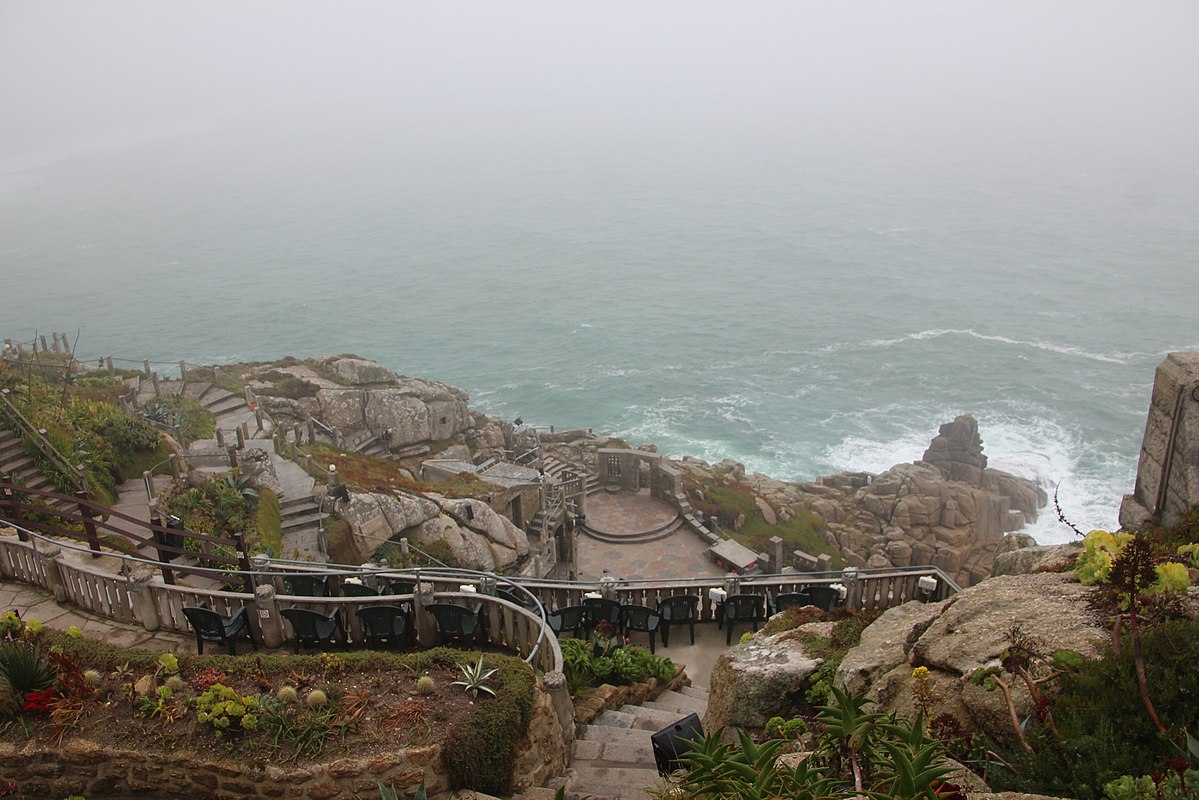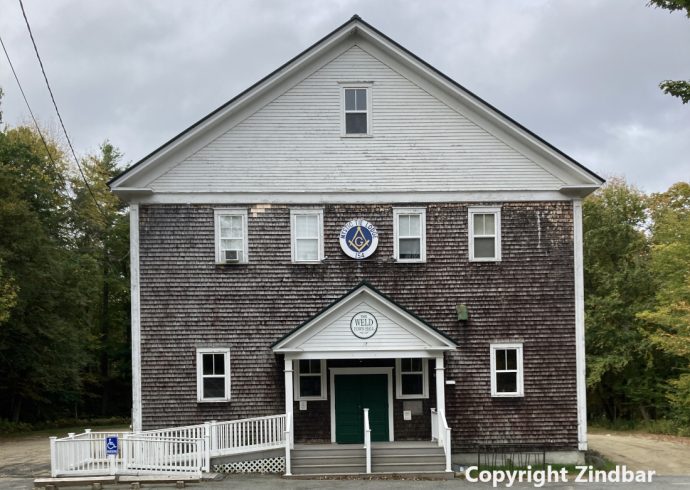
High on a cliff in Cornwall, England, an actor recites the words of the immortal bard. Beyond the upper stage, the full moon appears before the audience as it seems to float on the North Atlantic Ocean. The moon is real, for it is no prop, and the stage is as authentic as the Old Vic in London. As soon as the actor finishes his dialogue, the stage goes dark, and the audience waits for the next act to commence. Audience members silently comment on the beauty of the setting of the location, for this is no ordinary theatre stage in England.
The Minack Theatre is truly unique in the world of live theatre if only for the fact that it is completely open air with no enclosure. Hewn completely from stone from the side of a cliff at Porthcurno which is not too far from Land’s End in Cornwall, this theatre has delighted audiences since 1932 when the original stage was created with the deep blue ocean creating a backdrop. The audience seating was also made from stone, reminiscent of the Roman Coliseum where citizens from the ancient world would enjoy gladiator games. England has long enjoyed the theatre since the days of Shakespeare and while there have always been actors to create that special magic on stage, such as David Garrick and Spranger Barry, no other stage like the Minack could transport the viewer to another land that seems so far away in time. Cornwall has long been associated with legends that include the Mermaid of Zennor and Jack the Giant Killer. Land’s End is practically synonymous with beings not usually visible to humans so that special essence of magic hovers above the stage, enchanting theatre goers from all over England and the world. Yet the design of the Minack was made for the here and now to provide theatre goers a glimpse of the British stage in a natural setting that can be described as very British: the rocky cliffs of the western part of the nation and the view of the ocean that is only a stone’s throw from North America in the twenty-first century.
Walking down past bright summer gardens and staircases built of the same rock the theatre stage is, one can look out below to the theatre stage and catch a glimpse of more staircases on either side of the stage where the actors enter from. The seats in the audience are also made of rock but cushions are available for more comfortable seating during the performances. The brainchild of a Cornish woman by the name of Rowena Cade, along with her daughter Dorothy she held the first play by her garden that would eventually be moved a few yards onto the cliff. In May 1932, Shakespeare’s “The Tempest” was performed by local actors in the interest of Cade, who was a strong supporter of the theatre. Cade had the foresight to establish a permanent theatre so that both local actors and famous actors from London could perform plays right on the cliff. In those years before World War 2, Cade was able to finance the project, having come from a well-off family whose wealth came from the cotton mill business. With her genuine love for the theatre – she began acting when she was only eight years old – Cade was determined to create something rare and beautiful in the world of live theatre. Until the war with England began in 1940 when the Germans dropped bombs over London, the Minack continued to produce plays for Cornwall’s residents. “Twelfth Night”, “The Play of the Weather”, and “The Jackdaw of Rheims” appeared successively on the stage built of solid rock. As soon as the first bombing alert appeared on British newscasts, however, the Minack was closed for border protection purposes.
After the war ended, the Minack managed to survive largely intact, even though some repairs were in order. Part of the stage had to be mended but it wasn’t long before the theatre was once again open to the public. Once the theatre was cleared out of barbed wire put up by the British government to keep out potential attackers during the war, Cade and the other Minack supporters quickly resumed producing plays there. Since the end of the war, everything from Shakespeare to Shaw and plays based on local stories were performed on the rock hewn stage. Two notable local productions created especially for the Minack were “Tristan of Cornwall” and “The Net.” The first one was presented to the Cornish public in 1951 and was based in part on “Tristan and Isolde.” The latter was based on the story of a mermaid who became a human whenever a magical silver net was placed on her. Stories of the sea seemed more than appropriate for the Minack, given its location above the Atlantic Ocean. Today, the Minack still hosts live performances including the occasional opera throughout the warmer months of the year.
It is impossible to imagine the majestic view of the Minack unless one is actually standing on the theatre’s grounds. Pictures convey much and can provide an apt description, just like the Great Pyramids of Giza. Even though the Minack dates to the twentieth century, a lover of the theatre might just as well find himself or herself transported back to a time before the existence of modern buildings and building materials. A coliseum built entirely of rock is rare in this day and age but no splendor has been lost in Cade’s vision, which in the end exceeded her own expectations as to what the theatre should look like. The Minack has offered actors both local and already established the oppotunity to perform on this unique open air stage. If there is one theatre that the most die-hard theatre goers will want to attend in their lifetime, it is the Minack.
Theatre grounds include a museum exhibit hall devoted to Rowena Cade, a coffee shop, and gift shop. The Minack is open year round and has a regular schedule of performances held at night and is open during the day for tourists to enjoy. The Minack is located at Porthcurno in Cornwall, Great Britain.
Image Credit: Takver from Australia, CC BY-SA 2.0, via Wikimedia Commons.


